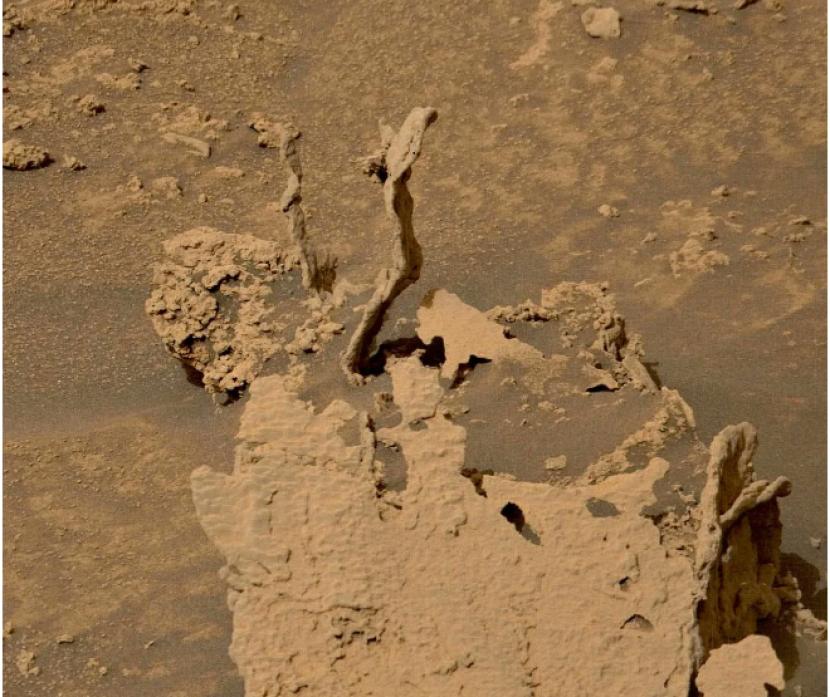Stone tower found in Gale Crater.
REPUBLIKA.CO.ID, JAKARTA — Explorer (rover) Curiosity has discovered an extraordinary rock formation on Mars. Between the shallow sand and boulders in Gale Crater There are several winding stone towers. Sediment spikes look almost like streams of frozen water pouring from an invisible pitcher in the sky.
Experts say the pillars may have been made of a cement-like substance that once filled ancient gaps in bedrock. As the softer rock is slowly eroded away, the twisting streams of solid material remain.
The rock formations were captured by the camera aboard the rover Curiosity on May 17th. However, the image was only shared last week by NASA and experts at the SETI agency (Search for Extraterrestrial Intelligence).
Although the structure may look alien, in world geology called a ‘hoodoo’ it is a high and thin rock crest formed by erosion. It can also be called a rock, tent, fairy chimney, or earth pyramid.
Reported from Sciencealert, Tuesday (7/6/2022), Hoodoo is usually found in dry environments, such as the canyons of Utah or southern Serbia. The pillars can sometimes rise as high as a ten-story building. Natural structures are formed by layers of hard rock formed within softer sedimentary rocks.
Two stone towers in Mars looks like it’s about to collapse compared to what we see on Earth. However, it is clear the rock is sturdy enough to withstand the lighter surface gravity experienced on the red planet.
Another strange rock formation discovered by Curiosity earlier this year may have been created in a similar way, albeit with very different results. This other, smaller stone looks like a piece of coral or a flower with many small petals extending towards the sun.
“One theory that has emerged is that the rock is a type of concretion created by minerals deposited by water in cracks or splits in existing rock,” explained a press release from NASA at the time.
Gale Crater isn’t completely flat, but the towers discovered by Curiosity stand out from the rest of their neighborhood, although no height measurements accompany the image.
The towering rock might look lifeless now. However, its formation speaks volumes about ancient conditions on Mars and whether life ever developed there billions of years ago.
Gale Crater itself is thought to be a drying lake bed, although it may be shallower and more transient than experts think.
–
–


